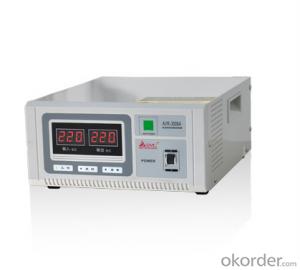5kv Solar Inverter
5kv Solar Inverter Related Searches
100w Solar Panel With Inverter Best Solar Panel Inverter 5000 Series Cast Aluminum Plate Portable Solar Panel Inverter First Solar Series 6 Module 12 Volt Solar Panel Inverter Plastic Solar Lanterns Buy Solar Panel Inverter Solar Panel Inverter Cost Solar Panel Without InverterHot Searches
Type Of Inverter For Solar Types Of Inverter For Solar Used Solar Inverter For Sale Inverter Size For Solar System Solar Edge Inverter For Sale 5kw Solar Inverter For Sale Solar Inverter For Sale Solar Inverter For Battery Solar Inverter For Split Ac Solar Inverter For Laptop Solar Inverter For Fridge Solar With Inverter Price Solar Inverter With 2 Battery Solar Inverter Price In China Best Solar Inverter In China Solar Inverter Price In Dubai Solar Inverter Price In Uae Solar Inverter Price In Kenya Solar Inverter Price In Kerala Solar Hot Water Collectors For Sale5kv Solar Inverter Supplier & Manufacturer from China
Okorder.com is a professional 5kv Solar Inverter supplier & manufacturer, offers integrated one-stop services including real-time quoting and online cargo tracking. We are funded by CNBM Group, a Fortune 500 enterprise and the largest 5kv Solar Inverter firm in China.Hot Products
FAQ
- A solar inverter is an essential component of a solar power system that converts the direct current (DC) generated by solar panels into alternating current (AC) electricity suitable for use in households and businesses. It ensures optimal performance and connectivity between the solar panels and the electrical grid, allowing for efficient utilization of solar energy.
- The role of a solar inverter in power factor correction is to adjust the power factor of the solar power system to ensure efficient energy conversion. It helps in balancing the reactive power and real power, leading to improved overall power quality and reduced system losses.
- No, a solar inverter is specifically designed to work with solar power conditioning units. It may not be compatible with other types of power conditioning units such as wind or hydro power systems.
- The maximum input voltage for a solar inverter typically depends on the specific model and manufacturer. However, in general, solar inverters are designed to handle input voltages ranging from around 250 to 600 volts.
- Yes, a solar inverter can be used with a solar-powered pool heating system. The solar inverter is responsible for converting the direct current (DC) generated by the solar panels into alternating current (AC) that can be used to power various devices, including pool heating systems.
- Yes, a solar inverter can be used with different types of solar charge controllers as long as they are compatible with each other. However, it is important to ensure that the voltage and current ratings of the inverter and charge controller are compatible to avoid any damage to the system.
- Overcharging a battery connected to a solar inverter can lead to several potential risks. One of the primary risks is a reduced lifespan of the battery. Overcharging can cause excessive heat and stress on the battery, leading to a shorter overall lifespan and reduced capacity over time. Another risk is the potential for thermal runaway or battery failure. Overcharging can cause the battery to become unstable, leading to a build-up of gases and potential leakage or explosion. Furthermore, overcharging can also result in increased maintenance costs. The battery may require frequent monitoring and maintenance to prevent overcharging, which can be time-consuming and costly. Lastly, overcharging can lead to inefficient energy storage. When a battery is overcharged, excess energy is wasted, reducing the overall efficiency of the solar energy system. To mitigate these risks, it is crucial to properly size and configure the solar inverter and battery system, ensuring that the battery is not subjected to excessive charging currents. Using appropriate charge controllers and monitoring systems can also help prevent overcharging and protect the battery from potential risks.
- A solar inverter handles frequency variations in the grid by continuously monitoring the frequency and adjusting its own output accordingly. If the grid frequency increases, the inverter reduces its output to prevent overloading. Conversely, if the frequency decreases, the inverter increases its output to maintain a stable supply. This dynamic response ensures that the solar inverter efficiently synchronizes with the grid and contributes to grid stability.















































